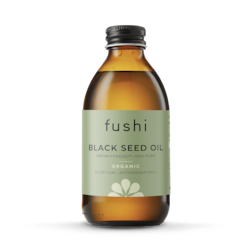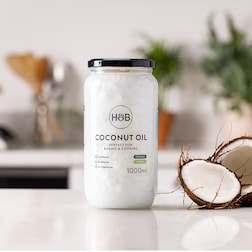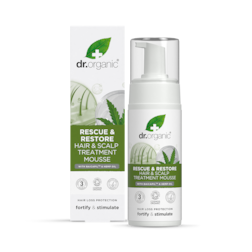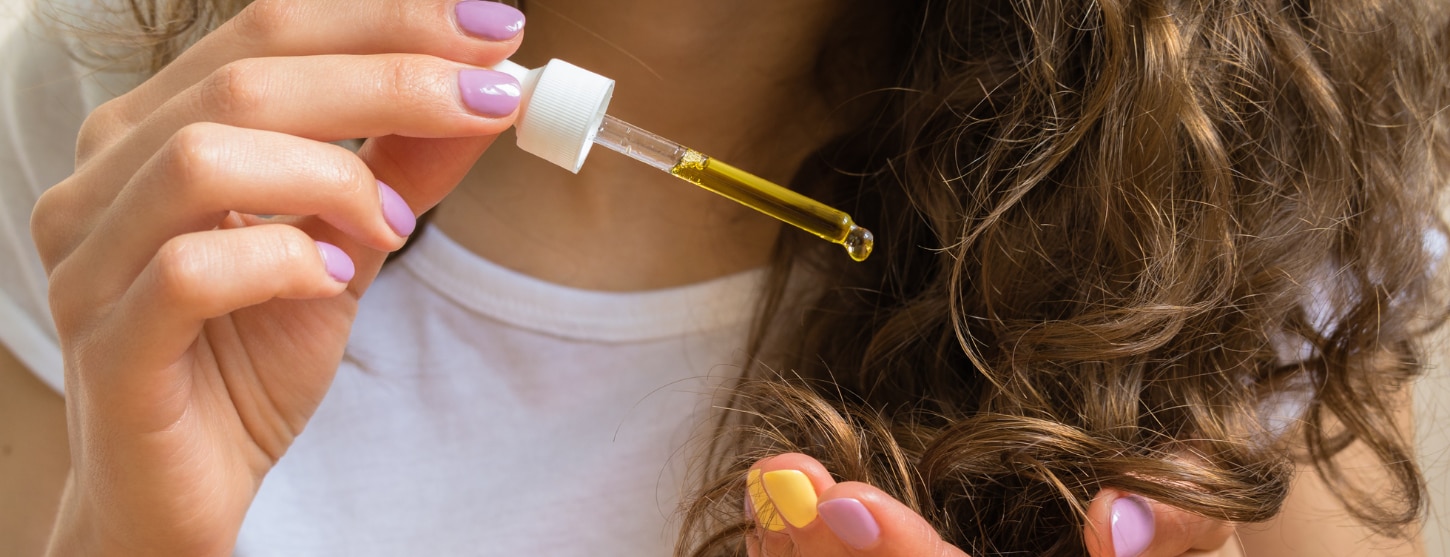15% off €25
Code:SPEND
Guide to the best hair oils

With so many different hair oils and serums promising to support hair growth, shine and moisture, we’re combing through the facts for each one and suggesting a few of our favourites...
Our top picks
For skin and hair
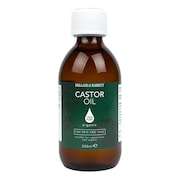
Holland & Barrett
Holland & Barrett Cold-Pressed 100% Pure Organic Castor Oil 250ml
33% off
€8.03
€11.99
Suitable for vegans
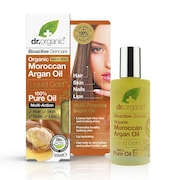
Dr Organic
Dr Organic Pure Moroccan Argan Oil 50ml
25% off
€17.61
€23.49
Perfectly diluted
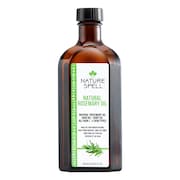
Nature Spell
Nature Spell Rosemary Oil For Hair & Skin 150ml
Buy 1 Get 1 Half Price
€10.49
Hair oil might seem like a hot new beauty trend, but people have used seed and plant oils to nourish their locks since ancient times.
While the Ancient Greeks would treat their hair with olive oil to keep it shiny, coconut oil for hair has been a thing across the southern hemisphere for thousands of years.
Searching for the science behind it all? Let’s cut out the myths and lock in the facts...
Why hair oil?
If you could see the anatomy of a strand of hair up close, it will be obvious why hair oils are a good idea.
It has hundreds of overlapping cuticles. Think of them like roof tiles, all pointing downwards. To stay smooth, these cuticles must all stay uniform and continue overlapping.
Heat damage, rough handling and too much sun can all roughen up the hair’s cuticles, causing them to become uneven.
Split ends, as you probably know, occur when the hair strand splits from the bottom and the split makes its way up the length of the hair strand.
This is where hair oils come in. They can seal fraying ends and fill the gap between damaged hair cuticles, lubricating the hair strand and helping prevent further damage.
Think of hair oils as grouting for the tiny invisible cracks on each of your hair strands!
What’s the difference between hair oil and hair serum?
Hair oils and hair serums are very similar and often contain many of the same ingredients.
However, whereas hair oils are primarily used to nourish and help improve the condition of your hair, hair serums are often silicone-based and have a more specific styling focus such as taming frizz caused by the weather. You might also notice infused shampoos, conditioners and mousses, which are less concentrated and may only add a little of the oil or scent.
Our favourite hair oils
Here are a few of the best hair oils around, according to us, plus their benefits for your locks.
Argan oil
The hugely popular argan oil is native to Morocco (and aka Moroccan hair oil).
It’s mostly made of fatty acids which explain why it’s so nourishing to hair strands.1
We like Dr Organic Pure Moroccan Argan Oil 50ml which contains 100% cold-pressed argan oil, meaning none of the moisturising properties are lost in its manufacture. Argan oil contains eight essential fatty acids and vitamin E.
How to make an argan oil mask
- Pour a little oil in a container of hot (not boiling) water until the oil is warm
- After shampooing, massage the oil into the hair and scalp
- Cover with a warm, moist towel for three to five minutes
- Rinse with warm water
Black seed oil
This oil comes from the pressed seeds of the nigella sativa plant.2 Black seed oil for hair and body offers softening and nourishing properties. It’s great for softening all hair types, as well as used diluted on the scalp to help fight flakiness.
With sun and air-dried ingredients, the Fushi Fresh-Pressed Organic Black Cumin Seed Oil is hand-blended with love and intention in their London workshop.
You might have also heard of it as an oral supplement, which doesn’t have hair benefits, such as the H&B Black Seed Oil + Vitamin D capsules , which contain a combination of the ancient ingredient Black Cumin, with vitamin D.
You can apply black seed oil directly to your skin or hair or mix it with a carrier oil like argan or avocado oil for a more balanced application. You can also incorporate it into massage oils, shampoos, or your homemade skincare creations.
Coconut oil
A favourite pre-shampoo treatment, as well as a way to seal in moisture on damp afro hair types. Due to its high saturated fat content, coconut oil is heavy and can make finer hair feel greasy if too much is applied.
As well as classic coconut oil like our H&B one, a product like Fushi Really Good Hair Oil contains a blend of coconut, argan and avocado oil which will nourish all hair types, without weighing it down. Coconut oil is rich in medium-chain fatty acids and can be used on hair damaged due to excessive styling or bleaching.
How much coconut oil you should use depends on your goals. Some people rub a little coconut oil in their scalp before bed and leave it in overnight before washing it off. Others use coconut oil as a hair mask. That means leaving it in for a few hours and then rinsing later.
You can also rub a bit into your usual shampoo or conditioner. Just remember, a little goes a long way. If you’re unsure how much to use, simply follow the instructions on the tub.
It’s important to remember that everyone’s hair is different. As a word of advice, using too much coconut oil can sometimes have the opposite and clog your hair follicles or give your hair a greasy appearance.
Coconut oil may not be suitable if your scalp is sensitive or if your hair is very coarse. Test a little on an inconspicuous part of your scalp to see if it works for you.
Hemp seed oil
Hemp seed oil has been extracted from hemp seeds, unlike CBD which is extracted from the leaves. The oil is packed with essential fatty acids omega-3, 6 and 9 – all important for moisturising hair.
The high content of fatty acids helps healthy hair growth, as well as vitamin A, which can help to moisturise the scalp and keep hair looking healthy. 3-4
This Hemp Oil Rescue & Restore Hair & Scalp Treatment from Dr Organic blends hemp oil and hibiscus into a mousse-like treatment. It’s a super simple way to add hemp oil to your hair routine without having to dilute or mix it yourself.
For the Hemp Oil Rescue & Restore Hair & Scalp Treatment, shake well before use, apply 2-5 pumps and gently massage into scalp before working it through the hair. Brush or comb hair from roots to tips, dry and style as desired.
For hemp oil, focus on applying hemp oil directly to the areas that are dry or damaged and need a little TLC. You can do this on dry hair as part of your everyday routine, or on wet hair after washing, before you move on to styling.
For hemp oil, focus on applying hemp oil directly to the areas that are dry or damaged and need a little TLC. You can do this on dry hair as part of your everyday routine, or on wet hair after washing, before you move on to styling.
Jojoba oil
This oil is renowned for its ultra-moisturising properties.5 Derived from the seeds of the jojoba plant, you can help smooth out frazzled hair cuticles and add shine with just a few drops of jojoba oil for ha
Castor oil
Castor oil is used for hair all over the world. Sourced from the castor bean, an inedible bean made up of fatty acids including omega-6 and ricinoleic acid.6
Castor oil's moisturising properties may help to reduce the appearance of split ends, help hair appear shiny and soothe a dry scalp.
H&B’s very own cold-pressed Organic Castor Oil; which is high in vitamin E and contains omega-6 and omega-9 fatty acids. Hydrating for dry skin and hair, it’s hexane-free and suitable for vegetarians and vegans.
Apply the oil sparingly, warming it between your palms before massaging it into your scalp for 5-10 minutes, and leave it in for at least an hour or overnight if possible. Afterwards, wash your hair with shampoo and conditioner, double cleansing if necessary, and use a clarifying shampoo regularly to prevent oil build-up.
Rosemary oil
When it comes to rosemary oil for hair and scalp, there are a host of recounted benefits, from emerging studies showing it may potentially encourage healthy hair growth to soothing properties. There's still research to be done on hair growth, but it is also being researched for its potential to help with soothing the scalp and dandruff-prone skin.7-10
A perfectly diluted solution for those wanting to add rosemary to their routine.
Nature Spell's Rosemary Oil harmoniously combines rosemary with almond and sunflower oils to create a gorgeous blend for hair and skin.
This rosemary oil is expertly pre-diluted with almond and sunflower oils to an ideal ratio, ensuring that you reap all the benefits without any hassle. Apply a small amount throughout damp or dry hair and style as usual.
Moringa oil
As an antioxidant, moringa oil can unlock your own natural hair and scalp moisture, while the behenic acid it contains can help protect against damage. The fatty acids will also leave your hair feeling soft, supple and shining.
We love Nature Spell's Moringa Oil, an age-old beauty favourite, designed to hydrate, protect, and shine. Say goodbye to frizzy, lifeless hair, as moringa leaves your mane with a lustrous sheen.
To apply the Nature's Spell moringa oil to hair, start by massaging a few drops into your scalp with your fingertips, whether your hair is dry or damp, then distribute it through the length of your hair, especially focusing on the ends. For best results, leave the oil in for at least 30 minutes, or even overnight by wrapping your hair in a towel or using a shower cap, before washing it out thoroughly with your usual shampoo. Additionally, you can use the oil as a styling aid by applying a small amount to your hair to tame frizz and add shine.
For skin, dispense a few drops of the pre-diluted oil onto clean hands and gently massage it into your face, neck, or any desired area using circular motions until fully absorbed.
For skin, dispense a few drops of the pre-diluted oil onto clean hands and gently massage it into your face, neck, or any desired area using circular motions until fully absorbed.
Can olive oil be used for your hair?
A staple for most kitchens is slowly making its way into people’s bathroom shelves. You might have used olive oil in cooking, but now it’s taking the beauty world by storm. Find out why in our ultimate guide to olive oil for your hair.
How to use hair oils and serums
Most oils and serums can be used on damp hair.
Oils will help to fill in the gaps in any rough cuticles on your hair strand, as well as sealing the moisture in as your hair dries.
Many oils and serums can also be used on dry hair. You should avoid applying heavy oil (like castor oil) or serum to the roots of your hair – only the lengths and ends.
Applying heavy products to the roots will leave you with product build-up on your scalp and oily roots.
Using a hair oil before shampooing might seem pointless, but by penetrating the hair and reducing the amount of water your strands absorb during washing, the oil helps your hair stay stronger over time.
Due to the oil content, you shouldn’t use hair oils pre-heat treatment, but you can use it after straightening or curling to smooth out frizz and keep it in place.
The final say
Looking to lock in moisture or give your hair that Hollywood glow? Centuries of beauty fans would agree there’s a lot pointing towards hair oils as a way to add moisture, a shiny appearance and smoothed split ends.
But can hair oil help your hair grow? There’s little evidence to support that one – but looking after your tresses and enjoying a bit of self-care with a hair treatment is never a bad thing.
The advice in this article is for information only and should not replace medical care. Please check with your GP or healthcare professional before trying any supplements, treatments or remedies. When using a hair oil for the first time be sure to do a patch test to ensure it’s suitable for you. Be wary of allergens with nut-based oils. Always read the label. Food supplements must not be used as a substitute for a varied and balanced diet and a healthy lifestyle.
- Khallouki F, Younos C, Soulimani R, Oster T, Charrouf Z, Spiegelhalder B, et al. Consumption of argan oil (Morocco) with its unique profile of fatty acids, tocopherols, squalene, sterols and phenolic compounds should confer valuable cancer chemopreventive effects. European Journal of Cancer Prevention. 2003 Feb;12(1):67–75.
- Ahmad MF, Ahmad FA, Ashraf SA, Saad HH, Wahab S, Khan MI, et al. An updated knowledge of Black seed (Nigella sativa Linn.): Review of phytochemical constituents and pharmacological properties. Journal of Herbal Medicine. 2021 Feb;25:100404.
- Virginia Tănase Apetroaei, Eugenia Mihaela Pricop, Daniela Ionela Istrati, Vizireanu C. Hemp Seeds (Cannabis sativa L.) as a Valuable Source of Natural Ingredients for Functional Foods—A Review. Molecules [Internet]. 2024 May 1;29(9):2097–7. Available from: https://www.ncbi.nlm.nih.gov/pmc/articles/PMC11085560/table/molecules-29-02097-t002/?report=objectonly
- VanBuren CA, Everts HB. Vitamin A in Skin and Hair: An Update. Nutrients. 2022 Jul 19;14(14):2952.
- Gad HA, Roberts A, Hamzi SH, Gad HA, Touiss I, Altyar AE, et al. Jojoba Oil: An Updated Comprehensive Review on Chemistry, Pharmaceutical Uses, and Toxicity. Polymers [Internet]. 2021 Jan 1;13(11):1711. Available from: https://www.mdpi.com/2073-4360/13/11/1711/htm
- Patel VR, Dumancas GG, Viswanath LCK, Maples R, Subong BJJ. Castor Oil: Properties, Uses, and Optimization of Processing Parameters in Commercial Production. Lipid Insights [Internet]. 2016 Jan;9:LPI.S40233. Available from: https://www.ncbi.nlm.nih.gov/pmc/articles/PMC5015816/
- Harries MJ, Sun J, Paus R, King LE. Management of alopecia areata. The BMJ [Internet]. 2010 Jul 23;341. Available from: https://www.ncbi.nlm.nih.gov/pmc/articles/PMC3230136/ https://www.ncbi.nlm.nih.gov/pmc/articles/PMC3230136/
- Ana Zgonc Škulj, Poljšak N, Nina Kočevar Glavač, Kreft S. Herbal preparations for the treatment of hair loss. Archives of Dermatological Research [Internet]. 2019 Nov 3 [cited 2024 Feb 5];312(6):395–406. Available from: https://pubmed.ncbi.nlm.nih.gov/31680216/
- Panahi. Rosemary oil vs minoxidil 2% for the treatment of androgenetic alopecia: a randomized comparative trial. Skinmed [Internet]. 2015 [cited 2023 Dec 19];13(1). Available from: https://pubmed.ncbi.nlm.nih.gov/25842469/
- Jain S, Arora P, Lalit Mohan Nainwal. Essential Oils as Potential Source of Anti-dandruff Agents: A Review. Combinatorial Chemistry & High Throughput Screening [Internet]. 2022 Aug 1 [cited 2023 Dec 19];25(9):1411–26. Available from: https://pubmed.ncbi.nlm.nih.gov/34254910/


